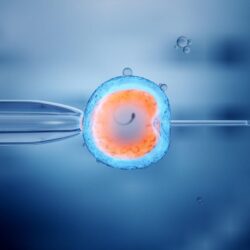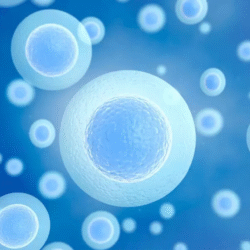How Long Does Pregnancy Pigmentation Last ?
Understanding Pregnancy Pigmentation
Pregnancy pigmentation, also known as melasma or chloasma, is a common skin condition that affects many women during pregnancy. It is characterized by dark, irregular patches on the skin, usually on the face, abdomen, and other sun-exposed areas. The exact cause of pregnancy pigmentation is not fully understood, but it is believed to be related to hormonal changes that occur during pregnancy. These hormonal changes can stimulate the production of melanin, the pigment responsible for skin color, leading to the development of dark patches on the skin.
Understanding the duration of pregnancy pigmentation
Pregnancy pigmentation can vary in duration from woman to woman. For some women, the dark patches may fade shortly after giving birth, while for others, it may persist for several months or even years. The duration of pregnancy pigmentation depends on a variety of factors, including the severity of the condition, skin type, and sun exposure. It is important to note that pregnancy pigmentation is a temporary condition and typically resolves on its own over time.
Management and treatment
While pregnancy pigmentation may resolve on its own, there are various management and treatment options available to help reduce the appearance of dark patches on the skin. These may include the use of sunscreen, topical creams, and chemical peels. It is important to consult with a healthcare professional before starting any treatment to ensure that it is safe and appropriate for use during pregnancy.
Factors Influencing Pigmentation Duration
Factors Influencing Pigmentation Duration Factors Influencing Pigmentation Duration
There are several factors that can influence the duration of pigmentation that occurs during pregnancy. One of the main factors is the amount of sun exposure a person gets during pregnancy. The more sun exposure a person gets, the more likely they are to develop pigmentation. Genetics also play a role in how long pigmentation lasts. Some people are simply more prone to pigmentation than others, and this can affect how quickly the pigmentation fades after pregnancy.
Hormonal changes are another factor that can influence the duration of pregnancy pigmentation. During pregnancy, the body undergoes a lot of hormonal changes, and this can affect the skin’s response to pigmentation. In some cases, pigmentation may fade relatively quickly after pregnancy, while in others it may persist for a longer period of time.
Another factor that can influence the duration of pigmentation is skin type. People with fair skin are more likely to develop pigmentation, and this pigmentation may be more pronounced and longer lasting than in people with darker skin. Additionally, the use of certain medications or skincare products during pregnancy can also affect the duration of pigmentation.
Overall health and lifestyle can also play a role in how long pigmentation lasts. People who maintain a healthy lifestyle and eat a balanced diet may find that their pigmentation fades more quickly than those who do not. Additionally, managing stress levels and getting enough sleep can also have an impact on the duration of pigmentation.
Common Areas Affected by Pigmentation
During pregnancy, pigmentation can affect various areas of the body, including the face, abdomen, breasts, and thighs. The most commonly affected area is the face, particularly the forehead, cheeks, and upper lip. This condition, known as melasma or the mask of pregnancy, is characterized by dark patches on the skin. The abdomen, especially the area around the belly button, may also experience pigmentation changes, and this is known as linea nigra. Additionally, the breasts and thighs can also show signs of pigmentation, with darkening of the nipples and inner thighs being common occurrences.
It is important to note that pigmentation changes during pregnancy are primarily due to hormonal fluctuations, particularly increased levels of estrogen and progesterone. These changes can lead to an increase in the production of melanin, the pigment responsible for skin color, resulting in dark patches and discoloration in various areas of the body.
While pigmentation during pregnancy is a common occurrence, it can still cause distress for many women. The changes in skin pigmentation can affect a woman’s self-esteem and confidence. Therefore, it is crucial for individuals experiencing these changes to seek support and advice from healthcare professionals, as well as to adopt effective management strategies to alleviate the impact of pigmentation on their lives.
Pregnancy pigmentation can affect different areas of the body, with the most common ones being the face, abdomen, breasts, and thighs. Understanding the factors contributing to these changes, such as hormonal fluctuations, is essential in managing and addressing pigmentation during pregnancy. By seeking appropriate support and implementing effective management strategies, women can navigate through this natural occurrence with confidence and self-assurance.
Management of Pregnancy Pigmentation
Managing pregnancy pigmentation can be challenging, but there are several strategies that can help minimize its effects. One important step in managing pigmentation during pregnancy is to avoid exposure to the sun, especially during peak hours. Wearing protective clothing and applying a high SPF sunscreen can be effective in preventing further darkening of the skin.
Avoiding harsh chemical peels and laser treatments during pregnancy is essential, as these procedures can potentially harm the developing fetus. Instead, gentle exfoliation using products with mild ingredients such as oatmeal or fruit enzymes can help improve skin texture and reduce the appearance of pigmentation.
In addition to these external management strategies, maintaining a healthy diet rich in antioxidants and vitamins can support overall skin health and potentially help in managing pregnancy pigmentation. Consuming foods high in vitamin E, vitamin C, and beta-carotene can provide the skin with essential nutrients to aid in skin repair and regeneration.
Nutrition for Pigmentation Treatment
Proper nutrition plays a significant role in the treatment of pigmentation. What we eat can greatly impact the health of our skin. Including foods rich in antioxidants, vitamins, and minerals in the diet can help in reducing pigmentation. Antioxidants like vitamin C, E, and beta-carotene can help in protecting the skin from damage caused by free radicals. Foods like citrus fruits, berries, green leafy vegetables, and carrots are rich in these antioxidants and should be included in the diet for healthy skin.
Incorporating foods that are high in probiotics can also be beneficial for skin pigmentation treatment. Probiotics promote gut health, which in turn can have a positive impact on the health of the skin. Foods like yogurt, kefir, and fermented vegetables contain beneficial probiotics that can help in improving the overall health of the skin.
Another important nutrient for pigmentation treatment is omega-3 fatty acids. These essential fatty acids help in maintaining the skin’s moisture and flexibility, which can aid in reducing pigmentation. Foods like fatty fish, flaxseeds, and walnuts are good sources of omega-3 fatty acids and should be included in the diet for healthy skin.
It is important to note that maintaining a balanced diet that includes a variety of fruits, vegetables, whole grains, and lean proteins is essential for overall skin health and pigmentation treatment. A diet that is rich in nutrients can aid in reducing pigmentation and promoting healthy, glowing skin.








